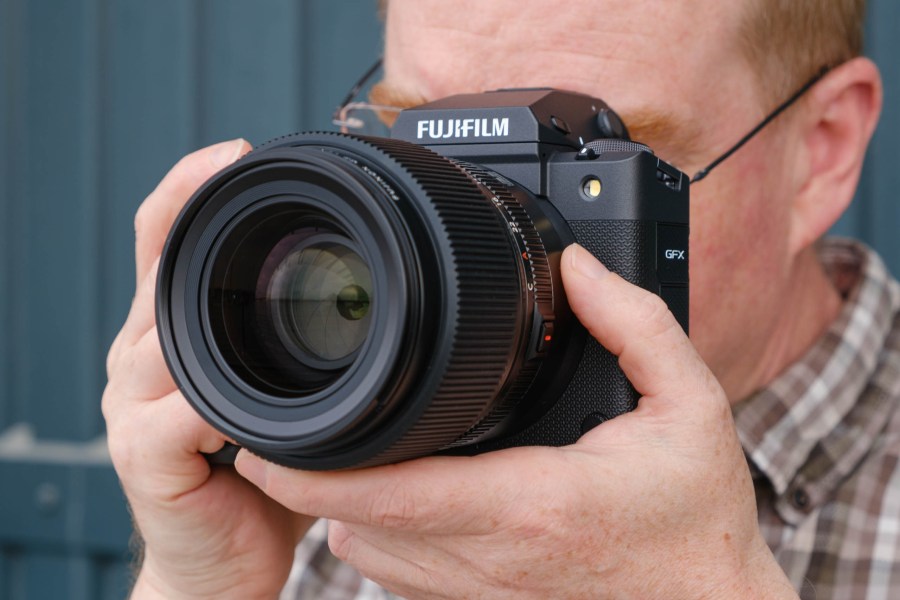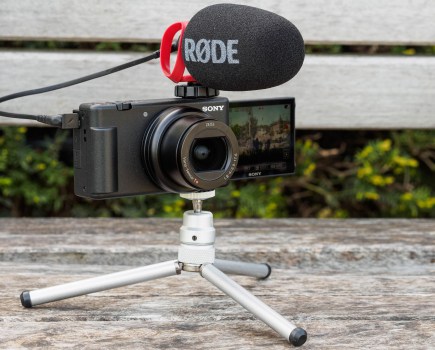The best Fujifilm cameras range from sleek, stylish mirrorless to high-res medium format; fantastic cameras for photographers and videographers of all stripes. Indeed, camera lovers are spoilt for choice by Fujifilm, so I’ve put together this guide to help identify one for your needs – these are the best Fujifilm cameras we’ve ever reviewed.
Every new Fujifilm camera is subjected to our rigorous testing process in order to qualify for this guide. Be it one of the popular X100 compacts or a slim stylish camera like the new X-E5, we assess each and every camera objectively to determine whom it’s for, how well it works, and whether it is worth its price. Not every camera makes it to this list!
While Fujifilm cameras and lenses tend to be more expensive than some brands, they’re often more affordable than full-frame options (especially when it comes to lenses). There’s also a thriving second-hand market for them, so we’ve included a section on the best second-hand Fujifilm cameras. Head there for budget options. And, at the bottom of this page we answer frequently asked questions about Fujifilm models and break down the key things to consider.
I’ve packed this page with all you need to know about Fujifilm cameras – so dive in and get cracking! If you go for a mirrorless camera, rather than a compact, then make sure to check out the best Fujifilm lenses, too.
The best Fujifilm cameras – our quick list
- Best Fujifilm camera overall: Fujifilm X-T5 – Buy now
- Best Fujifilm compact camera: Fujifilm X100VI – Buy now
- Best Fujifilm camera for beginners: Fujifilm X-T50 – Buy now
- Best Fujifilm hybrid camera: Fujifilm X-S20 – Buy now
- Best Fujifilm for landscapes: Fujifilm X-H2 – Buy now
- Best Fujifilm camera for sports and action: Fujifilm X-H2S – Buy now
- Best budget Fujifilm camera: Fujifilm X-T30 II – Buy now
- Best Fujifilm camera for travel: Fujifilm X-E5 – Buy now
Best medium format Fujifilm cameras:
- Best value Fujifilm medium format camera: Fujifilm GFX100S II – Buy now
- Best Fujifilm medium format compact camera: Fujifilm GFX100RF – Buy now
The best used Fujifilm cameras:
- Best used compact camera: Fujifilm X100V – Buy now
- Best all-round used Fujifilm: Fujifilm X-T4 – Buy now
- Best second-hand medium format Fujifilm: Fujifilm GFX100S – Buy now
Read on for a full breakdown of each camera on the list, starting with our standout favourite…
Looking for the best deal on Fujifilm cameras? Not only will you find the best Fujifilm cameras, but also some of the best Fujifilm camera deals, as our ‘Buy now’ buttons are setup to automatically take you to the best prices from trusted retailers. You’ll also find a list of other retailers below each camera, so you can find the right deal for you.
Why you can trust Amateur Photographer
We spend many hours testing every product we recommend, in detail, in a variety of situations and shooting scenarios, and only use experts for our reviews, so you can be sure that you’re getting the best products. Find out more about our expert writers.
BEST OVERALL
Best Fujifilm camera overall: Fujifilm X-T5
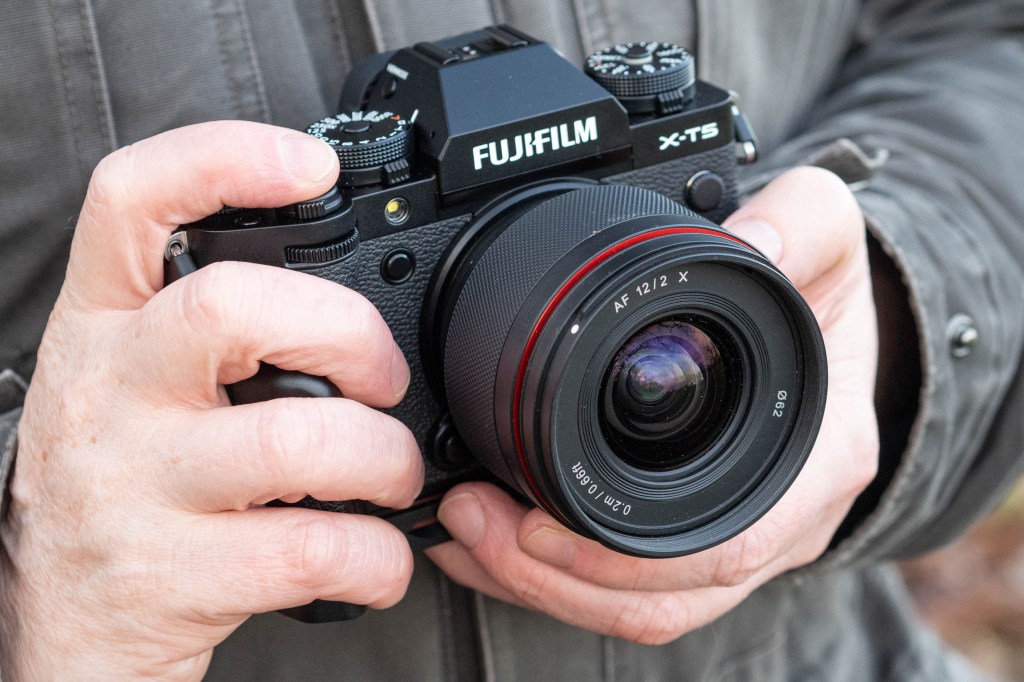
Amateur Photographer verdict
The Fujifilm X-T5 is certainly the best Fujifilm camera for photographers, with subject-detect autofocus, a high-resolution sensor and brilliant handling.- Gorgeous, high-resolution image quality
- Tough and weather-sealed
- Classic analogue-style controls
- Not everyone needs 40MP
- Small buffer when shooting full-res RAW
Specifications at a glance:
| Camera type | Mirrorless (X-mount) |
| Sensor | 40.2MP APS-C X-Trans CMOS 5 HR |
| Continuous shooting | 15 fps |
| ISO | ISO 64-51,200 extended |
| Video | 6.2K 30p / 4K 60p |
| Image stabilisation | 7 stops (5-axis) |
Long-awaited, much-appreciated – the Fujifilm X-T5 is the best Fujifilm camera for photographers, and probably the best camera that Fujifilm has ever made. Earning a full five stars in AP’s full review, this fabulous mirrorless camera gets a considerable resolution bump compared to the X-T4, leaping all the way up to 40MP. It’s also smaller than the X-T4, and much more similar in size to the original X-T1.
What’s more, it also receives the must-have feature of cameras that have come out over the past year – subject-detect autofocus, an AI-powered system that can pick out particular subjects like humans or animals and lock the focus onto them with unerring accuracy.
Cheaper than the X-H2, the X-T5 actually provides remarkable value for money once you dig into what you get. A broad ISO sensitivity range, a comprehensive autofocus system and a bangingly fast burst rate (15fps with the mechanical shutter or 20fps with the electronic shutter and 1.29x crop) – it all adds up to a camera that’s pretty much good at everything. For the same price as an old full-frame camera, the Fujifilm X-T5 gives you bags of functionality.
While the X-T5 shoots excellent video, in 6K no less, in my view it isn’t really a video-focused camera and something like the X-H2 will give video users more bang for their buck. However, the X-T5 is a fabulous all-rounder camera, a fine achievement by Fujifilm, and a compelling argument that full-frame really isn’t everything.
Best for: stills shooters who want to do a bit of everything
Read our full Fujifilm X-T5 review
BEST COMPACT
Best Fujifilm compact camera: Fujifilm X100VI

Amateur Photographer verdict
One of the most hotly anticipated cameras in recent history, the X100VI does not disappoint. With improved AF and stabilisation, it’s better than ever – the hard part is getting hold of one!- Sublime image quality
- Tactile, dial-based handling
- One-of-a-kind viewfinder
- Weather-sealing costs extra
- Demand outstripping supply!
Specifications at a glance:
| Camera type | Compact camera with 23mm F2 lens, 35mm equivalent: 35mm |
| Sensor | 40.2MP APS-C X-Trans CMOS 5 HR |
| Continuous shooting | 11fps (mechanical shutter) |
| ISO | ISO 125-64-51,200 (extended) |
| Video | 6.2K video at 30fps |
| Image stabilisation | 6 stops (5-axis) |
Fujifilm’s gorgeous X100 compacts have been a mainstay of the X lineup since the very beginning – the original X100 was in fact the camera that kicked off the brand’s renaissance back in 2010. Since then, the basic formula hasn’t really changed across six iterations – it’s a camera that pairs an APS-C sensor with a fixed 35mm-equivalent lens, combining them with dial-led controls for an immersive, hands-on shooting experience.
The X100VI is the latest in the series, and it arrived with big shoes to fill after the previous X100V blew up in popularity on TikTok. Happily, the X100VI is a triumph. It takes the beautiful 40MP sensor from the X-T5 and sticks it into a classic X100 body. So while you’ve still got that fixed 35mm equivalent lens, you can now use the digital teleconverter to crop into your images and still get brilliant results. At 50mm equivalent, you get 20MP images, and you can double your focal length to 70mm equivalent and still get 10MP shots – which is plenty for sharing digitally or even a small print.
Handling is, as ever, sublime. The classic styling means the X100VI just feels great to use, with the unique hybrid viewfinder providing an immersive composition experience. You can overlay an electronic readout on the optical viewfinder, giving yourself truly the best of both worlds. Or, if you prefer, use the super-slim tilting screen for waist-level shooting – perfect for staying unnoticed on the street.
Really, the only strike against the X100VI is that they’re so darn hard to get hold of – even with Fujifilm having assured the world that it has stepped up its manufacturing quotas, stock still tends to sell out quickly. You could also try the older X100V on the used market (see below for more detail), though that tends to get snapped up quickly as well.
Best for: street, documentary and day-to-day photography
Find out more in our comprehensive Fujifilm X100VI review
BEST FOR BEGINNERS
Best Fujifilm camera for beginners: Fujifilm X-T50
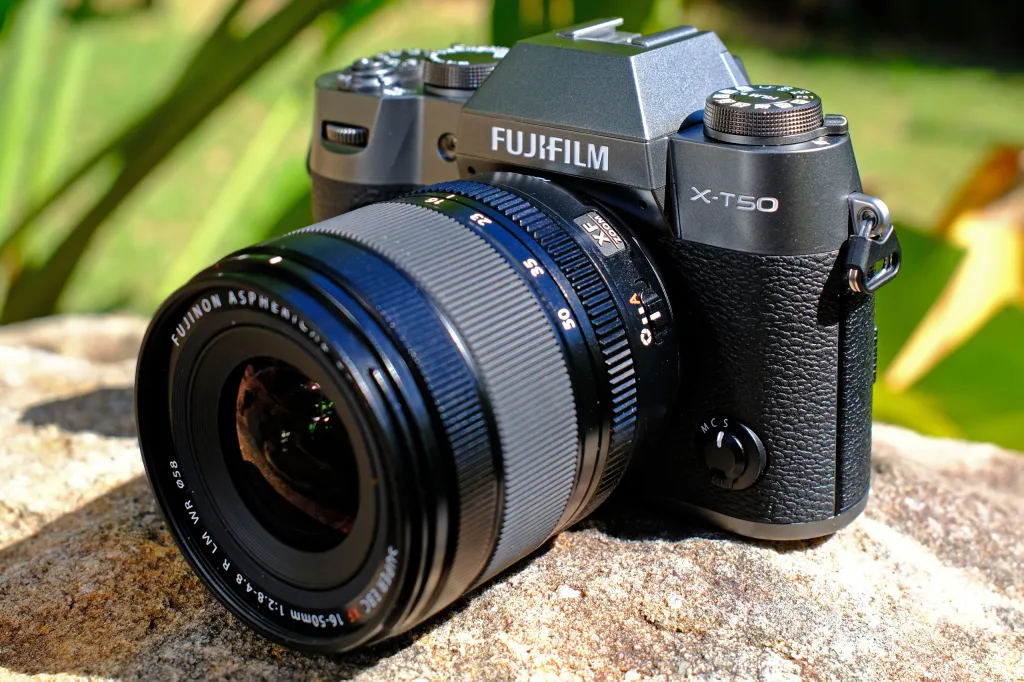
Amateur Photographer verdict
The X-T50 has been welcomed by those who thought Fujifilm had stopped releasing miniature versions of its flagships. I’m impressed by how much is packed in here, even if it’s pricier than I’d like.- Dedicated Film Simulation dial
- In-body stabilisation
- Slim, portable dimensions
- Quite pricey for an ‘entry-level’ camera
- Not weather-sealed
Specifications at a glance:
| Camera type | Mirrorless with (X-mount) |
| Sensor | 40.2MP APS-C X-Trans |
| Continuous shooting | 8fps shooting (20fps electronic shutter / 1.3x crop) |
| ISO | ISO 125-12,800 (standard) |
| Video | 6K 30p |
| Image stabilisation | 7 stops (5-axis) |
The new kid on the block, the Fujifilm X-T50 has been positively received so far – and scored well in our full review you can read below. It’s essentially a successor to the X-T30 II and it works off the same concept; take the sensor from the current flagship camera (then the X-T3, now the X-T5) and bung it into a smaller and more affordable body, sacrificing a few features in the process, but resulting in an attractive camera that’s more affordable and less intimidating to beginners than the big boy.
So, the X-T50 doesn’t have weather-sealing, or an ISO dial, or a second card slot. However, it is still capable of capturing brilliant, vibrant 40MP images, just like the X-T5 or the hugely popular X100VI. Indeed, I suspect that this camera might end up becoming a consolation prize of sorts for those who can’t face the multi-month wait that’s currently required to get one’s hands on an X100VI.
However, the X-T50 doesn’t just take things away – it also brings some new features. Probably the most talked about is the Film Simulation mode dial on the top plate, allowing you to switch between Fujifilm’s popular colour profiles without having to delve into menus. This may not interest all users, but for a slimmed-down camera like the X-T50 that’s likely to attract more casual photographers (who are maybe less interested in exhaustively processing RAWs) it makes a lot of sense – and I can confirm that it makes the camera a lot of fun to use.
The X-T50 isn’t a completely smash-hit out of the park. The price has raised a few eyebrows – it’s supposed to be an affordable alternative to the X-T5, but it’s not that much cheaper, with a price that’s firmly anchored in four figures even before you factor in the cost of a lens. It’s a charming camera, but budget users may be better off with a used model, or the older X-T30 II (featured below).
Best for: beginners, travel photographers
Read our full Fujifilm X-T50 review
BEST HYBRID
Best Fujifilm hybrid camera: Fujifilm X-S20
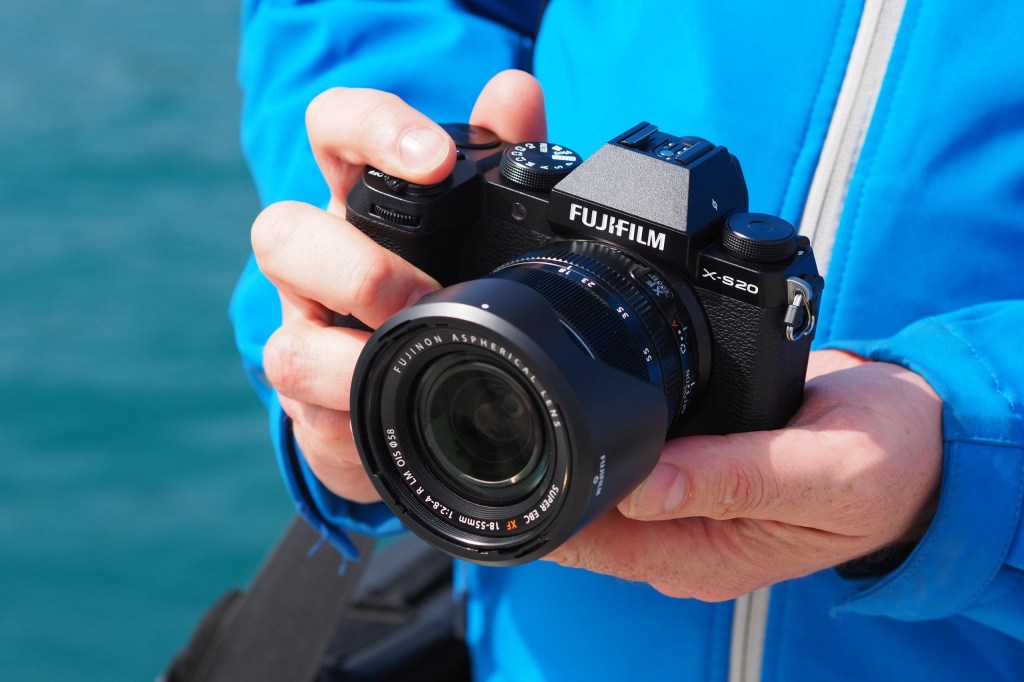
Amateur Photographer verdict
The Fujifilm X-S20 is an extremely powerful hybrid tool at a ‘beginner’ price and the perfect entry point to mirrorless cameras- Lightweight build
- Exceptional video specifications at this price
- Bigger battery
- No weather seals
- No resolution increase – still 26MP
Specifications at a glance:
| Camera type | Mirrorless (X-mount) |
| Sensor | 26.1MP APS-C X-Trans CMOS 4 |
| Continuous shooting | 30 fps |
| ISO | ISO 160-51200 extended |
| Video | 6.2K 30p video |
| Image stabilisation | 7 stops (5-axis) |
The original Fujifilm X-S10 was a significant departure for Fujifilm, packing much of the technology from the then-flagship X-T4 into a far more compact body with more mainstream controls, notably a regular mode dial rather than a shutter speed/ISO dial. The Fujifilm X-S20 builds on this with a whole series of advances that make it well worth the extra outlay (around $300/£300 more at current prices).
On the face of it, not much has changed, as you still get a 26MP sensor and an almost identical body design. However, a faster processor delivers vastly increased buffer depth for continuous shooting, also thanks to a UHS-II compatible card slot, new AI-driven autofocus brings automatic subject recognition and tracking, and the video capabilities get a huge boost, with 4K 60p recording, ‘open gate’ 3:2 6K video, internal 4:2:2 recording and 12-bit raw via HDMI – there’s also a headphone socket now, and a bigger battery with greatly extended shooting times.
If you’re mainly interested in stills, the X-S20 may not offer enough of an improvement to make it worth the extra over the X-S10, but for video or hybrid shooters it’s a major upgrade. It might look like an expensive beginners camera, but it’s actually an extremely powerful hybrid tool at a ‘beginner’ price.
The body isn’t weather-sealed, but its light weight and compact size make the X-S20 ideal for travel photography, vlogging and other tasks where portability is key. A great all-rounder, and the perfect entry point to mirrorless cameras.
Best for: those who shoot both video and stills
Learn more in our full Fujifilm X-S20 review
BEST FOR LANDSCAPES
Best Fujifilm for landscapes: Fujifilm X-H2

Amateur Photographer verdict
With its 40MP sensor and 8K video shooting capabilities, the Fujifilm X-H2 is a great choice for those shooting video and/or stills as well as photographers who prioritise resolution and detail.- Superb sensor resolution
- Muscly video spec
- Next-gen autofocus
- High-res muti-shot can’t be processed in-camera
- Similar feature-set to cheaper X-T5
Specifications at a glance:
| Camera type | Mirrorless (X-mount) |
| Sensor | 40MP APS-C BSI X-Trans sensor |
| Continuous shooting | Up to 20fps shooting (with 1.29x crop), 15fps uncropped |
| ISO | ISO 125-12,800 (64-51,200 extended) |
| Video | 8K 30P video recording |
| Image stabilisation | 7 stops (5-axis) |
The Fujifilm X-H2 was originally released alongside the high-speed X-H2S, and at the time of release, its 40.2MP resolution made it the highest-resolution X-mount camera you could buy. Shortly after, however, the stylish X-T5 arrived, using the exact same 40.2MP CMOS 5 HR sensor and costing about $300/£200 less. So why, you might reasonably ask, would I opt for the X-H2 over the X-T5?
A big part of the answer lies in video, in which category the X-H2 has the X-T5 licked. The X-H2 can record 8K 30p video with no crop in 4:2:2 10-bit, internally, for as long as 160 minutes. The X-T5 and the high-speed X-H2S both top out at 6K video-wise, still impressive, but the X-H2 is definitely a better choice for video shooters.
This isn’t the whole story though. I’ve found that the X-H2 is also a better choice for burst-shooting, which it can do at up to 20fps using the electronic shutter and with a 1.29x crop. Yes, the X-T5 can do this too, but the difference is in the shot buffer – the X-H2 can record more than a thousand JPEGs or 400 RAWs before the burst rate starts to slow down, while the X-T5 will start to stutter after 120 JPEGs or just 19 RAWs. The X-H2 also has a class-leading fastest shutter speed of 1/180,000-sec.
The X-H2 sits in a curious position. It’s high-res, but offers the same res as a cheaper stablemate. It’s fast, but not quite as fast as Fujifilm’s X-H2S (which, to be fair, is around $500/£500 more expensive). It might be quite a specific user who finds the X-H2 to be the perfect camera for them – but their reward will be a superb all-around camera.
Best for: Shooters who prioritise resolution and detail
Read our full Fujifilm X-H2 review
BEST FOR SPORTS
Best Fujifilm camera for sports and action: Fujifilm X-H2S

Amateur Photographer verdict
The Fujifilm X-H2S is a pro-spec, high-speed flagship that is designed for sports and action.- Supports CFExpress for speed
- AI-powered autofocus
- Super-fast sensor readout
- One of the priciest X-mount cameras
Specifications at a glance:
| Camera type | Mirrorless (X-mount) |
| Sensor | 26.1MP APS-C stacked BSI CMOS 5 HS |
| Continuous shooting | 15fps (mechanical shutter) |
| ISO | ISO 160-12800 (80-51200 extended) |
| Video | 6K 30p video recording |
| Image stabilisation | 7 stops (5-axis) |
Fujifilm’s speedster flagship X-mount camera makes pains to differentiate itself from the company’s other models. Designed to be the premium, ambitious and enthusiast-friendly APS-C model in the range, the Fujifilm X-H2S offers a new stacked version of the 26.1MP sensor, as well as 6K video recording at 30fps (and 4K at up to 120fps), and 15fps continuous shooting (40fps with electronic shutter).
AI-assisted autofocus is able to recognise many subjects by their shape – birds, cars and trains as well as humans and pets. It also supports high-speed CFexpress Type B cards as well as SD, and has the option to add a fan so that overheating doesn’t affect performance, particularly during video capture.
It all adds up to a formidable piece of hardware that should be able to tackle the most demanding photography and video tasks.
Best for: Premium performance across the board
Read our full Fujifilm X-H2S review
BEST BUDGET FUJIFILM
Best budget Fujifilm camera: Fujifilm X-T30 II

Amateur Photographer verdict
The Fujifilm X-T30 II succeeded the hugely popular X-T30 and packs quite a lot for its price – making it a good budget option.- Speedy, reliable autofocus
- Twin-dial controls
- No stabilisation
- Screen can’t face forwards
Specifications at a glance:
| Camera type | Mirrorless (X-mount) |
| Sensor | 26.1MP APS-C X-Trans CMOS 4 |
| Continuous shooting | 8fps continuous shooting (mechanical shutter) |
| ISO | ISO 160-12800 (80-51200 extended) |
| Video | 4K CINE/UHD 30,25,24fps |
The replacement for the hugely popular X-T30 and yet another camera in the current range that uses the popular 26.1MP X-Trans 4 sensor and X-Processor 4, the Fujifilm X-T30 II is an entry-level model with a lot to offer for its price.
It lacks in-body image stabilisation, while its tilting screen can’t be flipped to face forward, which detracts from its vlogging and selfie-taking potential, but its autofocus system is fast and accurate and image quality is on a par with models that share the same sensor and processor hardware (like the X-E4, X-T4 and X-S10). Video recording options include 4K at 30fps and 1080p at 60fps.
Where the X-S10 and X-S20 have a PASM mode dial in the style of rival manufacturers, the X-T30 II uses Fujifilm’s signature twin-dial setup, with shutter speed and exposure compensation quickly adjustable via two top-mounted dials. This does look to be the last of Fujifilm’s old-school designs, however, at least at the beginner/enthusiast end of the market, so if you want one and you find a retailer that has it in stock, you shouldn’t waste any time.
Best for: Shooters on a strict budget
Read our full Fujifilm X-T30 II review where we put this camera through its paces
BEST FOR TRAVEL
Best Fujifilm camera for travel: Fujifilm X-E5

Amateur Photographer verdict
The X-E5 is a gorgeous camera that looks like an X100V but lets you change the lens as needed. For those that want the latest tech in a stylish and beautiful camera body.- Small body, but with enthusiast-friendly design
- Engaging analogue controls
- Excellent raw image quality
- Peerless in-camera colour processing
- No weather-sealing
- Fairly small viewfinder
Specifications at a glance:
| Camera type | Mirrorless (X-mount) |
| Sensor | 40.2MP X-Trans CMOS APS-C |
| Continuous shooting | 13 fps / 20 fps (crop) |
| ISO | ISO 125-12,800 (standard) |
| Video | 6.2K 30p, 4K 60p, and Full HD 240p |
The Fujifilm X-E5 arrived in 2025 as a new, stylish, retro looking mirrorless camera, with the same good looks as the wildly popular X100VI, but with the ability to change lenses. As one of the smaller mirrorless cameras, it makes it a great option for travel, and thanks to the changeable lenses, you can choose the perfect lenses for your needs, whether that’s ultra-small new slimline 23mm f/2.8 lens, perfect for street photography, or a more versatile zoom lens.
This slim, portable camera is perfect for slipping into a bag without weighing you down too much, and as long as you pair it with lighter X-mount lenses, you’ll have an ideal setup for city-breaks and day-to-day exploration. The X-E5 has a lovely new Film Simulation dial, which many photographers are rather fond of, making it even more tactile and enjoyable to shoot with.
Read our full Fujifilm X-E5 review
Best Medium Format Fujifilm Cameras
BEST VALUE
Best value Fujifilm medium format camera: Fujifilm GFX100S II
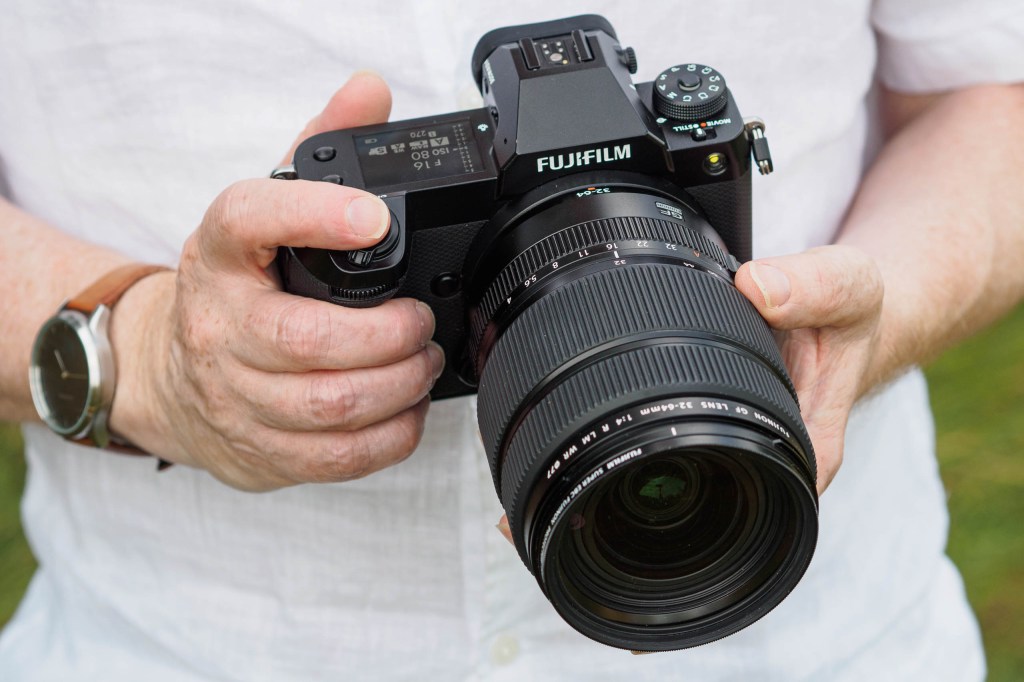
Amateur Photographer verdict
The Fujifilm GFX100S II offers unparalleled 100 megapixel resolution for under $5000 / £5000.- Amazing image quality in both raw and JPEG
- Very manageable body size
- Effective in-body image stabilisation keeps images sharp
- Large, bright and detailed viewfinder
- Face detection and subject selection not integrated with each other
- Slow 2fps continuous shooting with live view
Specifications at a glance:
| Camera type | Mirrorless (GF-mount) |
| Sensor | 102MP medium-format sensor |
| Continuous shooting | 7fps |
| ISO | ISO 80-12,800 (standard) |
| Video | 4K 30p |
| Image stabilisation | 8 stops (5-axis) |
Ever since it introduced the GFX 50S in 2016, Fujifilm has been intent on reducing the cost of medium-format digital to make it accessible to a wider range of photographers. With the Fujifilm GFX100S II, it’s brought a 100MP camera to market for under $5000/£5000 for the first time. This is significantly less than its direct predecessor, the GFX100S, cost in 2021, which is impressive given that most new models come with a hefty increase in price tag.
The Fujifilm GFX100S II takes the fine GFX100S design and adds some welcome upgrades, most notably a better viewfinder and an improved subject detection autofocus. You get a camera that’s not too large, handles nicely, and beats any full-frame camera for out-and-out image quality. That said, it’s still best suited to subjects where resolution is more important than speed, such as landscapes or portraits.
Read our full review of the Fujifilm GFX100S II
Best for: Professional photography on a budget.
BEST MEDIUM FORMAT COMPACT
Best Fujifilm medium format compact: Fujifilm GFX100RF
Amateur Photographer verdict
The Fujifilm GFX100RF produces fabulous image quality that belies its compact size. It’s enjoyable to shoot with and gives great results, with the aspect ratio dial encouraging creative composition.- Great out-of-camera colour thanks to Film Simulation modes
- Exceptional image quality
- Aspect ratio dial encourages creative composition
- Engaging analogue controls
- Relatively small f/4 maximum aperture lens
- No image stabilisation
- Screen only tilts up and down
Specifications at a glance:
| Camera type | Premium compact camera with fixed 35mm f/4 lens |
| Sensor | 102MP CMOS sensor, 44 x 33mm |
| Continuous shooting | Up to 6fps |
| ISO | ISO 80-12,800 (standard) |
| Video | DCI 4K resolution at 30fps, or FullHD at up to 60fps |
The new GFX100RF combines Fujifilm’s proven fixed-lens APS-C excellence with their GFX medium format in a curious hybrid. It has a 102MP medium-format sensor and fixed 28mm equivalent lens, in a rangefinder-style body design that resembles the popular Fujifilm X100VI. The result is pleasing.
Given its large 44 x 33mm sensor, the GFX100RF is remarkably small: not quite pocket-sized but it’ll fit into a small bag. As such, its only real competitor is the full-frame Leica Q3, which is of similar size. At $4,899 / £4,699 it is exclusive; though much less expensive than the Q3.
Its 28mm-equivalent lens makes it better suited to photography. It does have subject detection autofocus that can recognise people, animals and vehicles. Human face/eye detection is kept separate from the rest of the subject detection options, while being mutually exclusive. That feels illogical on the firm’s other models, but is less problematic here, as it’s not a choice camera for shooting wildlife or motorsport.
Best for: landscape, architecture, and travel photography
Best used Fujifilm cameras
Here, I’ve picked out the Fujifilm cameras that are no longer in production or generally aren’t available to buy new, but still represent a bargain on the used market. Check out this guide to the best second-hand full-frame mirrorless camera for some more options and tips on how to get the best deals on the used market.
BEST USED COMPACT
Best used Fujifilm compact camera: Fujifilm X100V
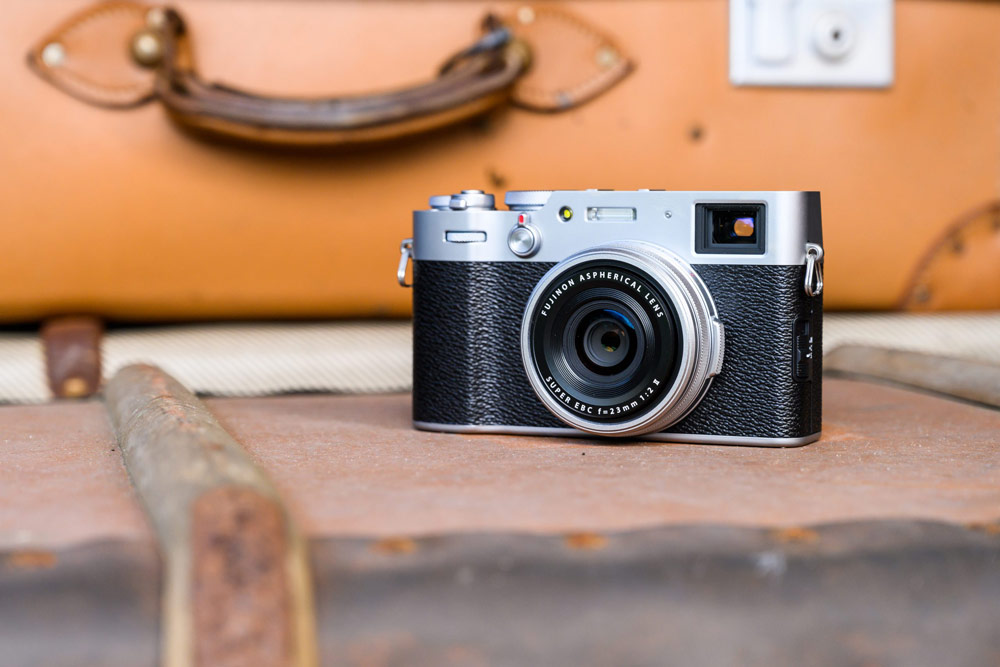
Amateur Photographer verdict
The Fujifilm X100V is TikTok-famous and it’s not hard to see why given its fantastic performance in almost every situation, retro exterior and compact size.- Immensely fun to shoot with
- Sharp fixed lens
- Teleconverters are available
- Pricey for a compact
- Stock sells out quickly
Specifications at a glance:
| Camera type | Premium compact camera with 23mm F2 lens, (= 35mm) |
| Sensor | 26.1MP APS-C X-Trans CMOS 4 |
| Continuous shooting | 11fps (mechanical shutter) |
| ISO | ISO 160-12,800 (extendable to ISO 80-51,200) |
| Video | 4K 30fps |
Now discontinued, the X100V remains available on the second-hand market – but like the X100VI, you may need fast reflexes to get hold of one, as it remains popular. Boasting the specifications of a mirrorless camera in a fixed lens compact design, the Fujifilm X100V sports the same 26.1MP APS-C sensor and X-Processor 4 as many of its interchangeable lens stablemates.
While you can’t remove its 23mm lens, its F2 aperture and excellent optics make it a fantastic performer in almost all situations (and you can use Fujifilm’s optional 0.8x and 1.4x conversion lenses to change the focal length to 28mm and 50mm equivalent respectively).
With an 11fps continuous shooting speed (30fps with electronic shutter) it’s quick, and autofocus is swift and accurate to boot; combined with its inconspicuous size (it can fit in a jacket pocket) and easy handling, these traits make it ideal for street photography. It can be equipped with a weather resistant kit too, making it suitable for outdoor snapping all year round. It’s easy to see why this made it into our list of the best compact cameras.
If it’s too expensive or hard-to-find for you, check out our list of the best Fujifilm X100V alternatives.
Best for: Uncomplicated travel and street photography
Learn more in our Fujifilm X100V review
BEST USED ALL-ROUNDER
Best all-round used Fujifilm: Fujifilm X-T4

Amateur Photographer verdict
The Fujifilm X-T4 is a fantastically flexible camera that can confidently step up to any photo or video task.- Effective stabilisation
- Good at everything
- Rapid, accurate focusing
- No headphone socket
Specifications at a glance:
| Camera type | Mirrorless (X-mount) |
| Sensor | 26.1MP APS-C X-Trans CMOS 4 |
| Continuous shooting | 15fps (mechanical shutter) |
| ISO | ISO 160-12800 (ISO 80-51200 extended) |
| Video | 4K 60p, HD 240p |
| Image stabilisation | 6.5 stops (5-axis) |
At the time of its release, the Fujifilm X-T4 may have been the best mirrorless APS-C camera ever made. Building on previous X-T models by adding effective 5-axis in-body image stabilisation (with some increased bulk) and a highly manoeuvrable side-hinged vari-angle touchscreen, it’s a fantastically flexible camera that can confidently step up to any photo or video task.
With rapid continuous shooting, fast and accurate Face/Eye autofocus and powerful processing, it’s a dab hand when it comes to demanding action or wildlife photography, while its sensor resolves excellent levels of detail and handles noise remarkably well.
Videographers will appreciate its ability to shoot 4K at up to 60fps, although they may find the lack of a headphone socket for monitoring audio levels disappointing – this can be resolved using a USB-C to 3.5mm adapter.
Now that the X-T5 has arrived, the X-T4 can be picked up for a decent discount on its launch price, as well as being available second-hand. And let’s not split hairs – this is still an excellent camera for basically anyone, especially those who don’t like the idea of cards and drives filling up with 40MP files.
Best for: All-round photo and video shooting
Read our thoughts on this camera in our Fujifilm X-T4 review
BEST USED MEDIUM FORMAT
Best used medium format: Fujifilm GFX100S
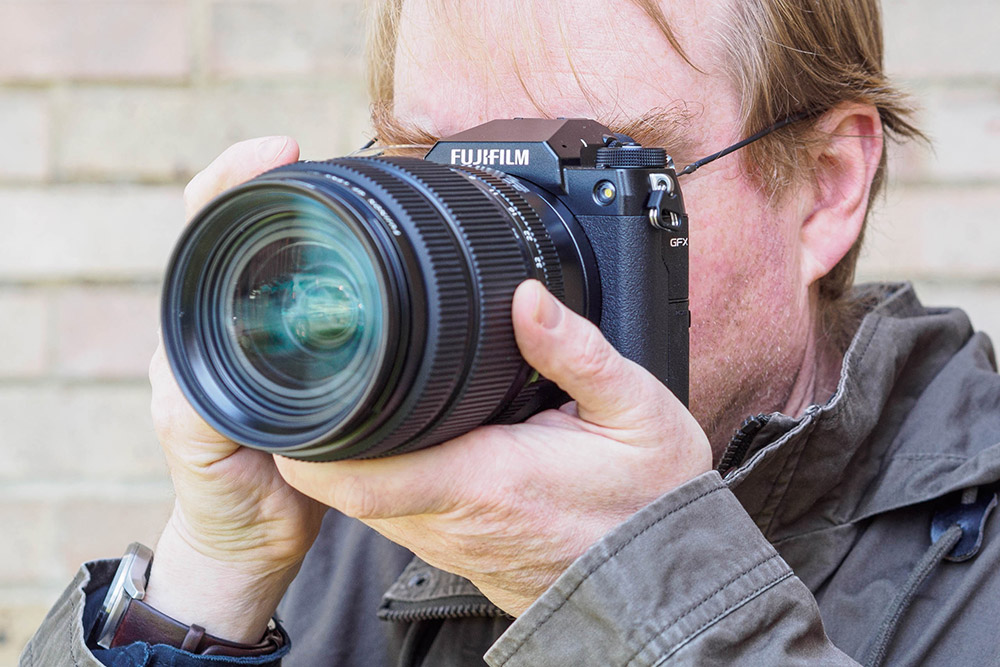
Amateur Photographer verdict
The Fujifilm GFX100S’s huge 102MP sensor and ability to record 4K video makes it a tempting choice for photographers for whom detail is a priority.- Gorgeous, astonishing image quality
- 4K video
- Effective stabilisation
- Price inevitably a barrier
Specifications at a glance:
| Camera type | Mirrorless (G-mount) |
| Sensor | 102MP medium format Bayer array |
| Continuous shooting | 5fps (mechanical shutter) |
| ISO | ISO 50-102,400 (extended) |
| Video | 4K 30p |
Another medium format camera in a surprisingly compact and easy-to-handle body, the Fujifilm GFX100S has since been updated by the GFX100 II, but is plentifully available on the second-hand market.
The image quality on offer here is nothing short of astonishing, with vast amounts of detail and dynamic range achievable (even when shooting handheld in less than perfect lighting conditions, thanks to the in-body image stabilisation). It can also record 4K video at 30fps, which puts it above the GFX50S II, which can only manage 1080p recording, despite the 51MP sensor.
The GFX50S II’s affordability means it’s still a better entry-point to larger format photography, but if detail is a priority for you then the GFX100S is definitely worth the extra outlay. It currently costs no more than some high-end full-frame mirrorless cameras I could name but it offers a whole new level of resolution.
Best for: Enthusiast photographers who need the most detail possible
Read our Fujifilm GFX100S review to learn more.
How to choose the best Fujifilm camera
The first thing to establish is which Fujifilm camera system you’re going to use. X-series mirrorless cameras are the stars of the show, offering terrific image quality from APS-C sensors. Whether you choose the photo-focused Fujifilm X-T5, the high-speed shooting Fujifilm X-H2S or the DSLR-styled Fujifilm X-S20, you’ll get a terrific camera packed with high-end features.
Or, for a premium large-sensor experience, you can bypass full-frame and go all the way up to the Fujifilm GFX medium-format system. These cameras offer sky-high megapixel counts (more than 100MP in some cases) in mirrorless-style bodies. For either of these systems, remember to look at the best Fujifilm lenses.
Alternatively, you can look at Fujifilm’s fabulous compacts. The range isn’t as broad as it once was, but the fixed-lens X100 series is still going strong, with the latest Fujifilm X100VI arriving to a rapturous reception among photographers. That magical combo of an APS-C sensor, classic styling, and a 35mm equivalent lens still turns heads!
Here are a few more key specs to think about when shopping for Fujifilm cameras…
Resolution
Fujifilm has upped its resolution game in recent times. For years, its X-series cameras resolutely stuck to the 26.1MP X-Trans sensor design. However, the arrival of the X-T5 and the X-H2 in 2022 changed everything, as both cameras sport a hefty 40MP of resolution, providing much more detail in images, at the cost of larger files. Of course, if this isn’t enough for you, the medium format GFX cameras run up to 100MP.

Build and handling
Some Fujifilm cameras are built more ruggedly than others, and if you need weatherproofing for outdoor shooting, you’ll want to be careful which you buy. For instance, while the X-T cameras are generally weatherproof, the beginner-friendly X-S10 and its successor the X-S20 are not. The good news though is that handling is consistently very good across all Fujifilm cameras, with dial-led controls and good viewfinders.
Shooting speed and autofocus
Fujifilm’s shooting speeds are generally very good, and further improved when the X-H2S came along in 2022. Its stacked sensor design enables super-fast shooting speeds of up to 40fps with the electronic shutter, and it also has AI-powered subject-detect autofocus that’s capable of keeping up. AI subject detection now appears in the X-S20, too, as well as the X-T50.

In-body image stabilisation
In-body image stabilisation (IBIS) is a common feature on Fujifilm cameras, and can be hugely useful both for video and for shooting at slow shutter speeds in low light. Older models like the X-T30 II don’t have it, while newer cameras like the X-S20 do. However, a fair few Fuji X-mount lenses have built-in optical stabilisation anyway, so this may not be a deal-breaker.
For more options, check out our guide to the best mirrorless cameras, and we also have a rundown on DSLR vs mirrorless: which is best if you’re struggling to pick which type of camera is right for you.
Fujifilm cameras: frequently asked questions
Here, let us take a closer look at some of the common questions that readers ask me about Fujifilm cameras.
Which Fujifilm cameras have Film Simulation?
All Fujifilm APS-C and medium format cameras have Film Simulation to some degree – it was present in the original X100 released all the way back in 2011. However, Fujifilm has consistently bestowed its newer models with added stock simulations and modes like “Classic Chrome” (introduced on the X100T) or “Eterna” (introduced on the X-H1). This means that a Film Simulation enthusiast will have a lot more options for experimentation if they opt for a more recent Fujifilm camera. The new X-T50, X-M5, and X-E5 also has a dedicated dial for Film Simulation modes.

Which Fujifilm cameras are weather-sealed?
A number of Fujifilm’s mirrorless and compact cameras have weather-sealing, making them much more robust for outdoor shoots in which the weather conditions are less than favourable. The following Fujifilm X cameras are weather-sealed
- Fujifilm X100V, X100VI (with optional kit)
- Fujifilm X-T5, X-T4, X-T3, X-T2, X-T1
- Fujifilm X-H2S, X-H2, X-H1
- Fujifilm X-Pro3, X-Pro2
- Fujifilm GFX 100S, GFX 100
- Fujifilm GFX 50S II, GFX 50S, GFX 50R
Of course, if you choose a weather-sealed camera, it’s not going to be much use if you don’t also pair it with a weather-sealed lens. Fujifilm uses a “WR” acronym to denote which of its lenses have weather-sealing, so look for this if you’re lens-shopping and want to avoid compromising your kit.
Which Fujifilm cameras have IBIS (in-body image stabilisation)?
As I’ve explained at great length throughout this guide, IBIS is a hugely useful feature for both photographers and videographers. The following is a list of Fujifilm cameras with IBIS:
- Fujifilm X100VI
- Fujifilm X-E5
- Fujifilm X-T5, X-T4, X-T50
- Fujifilm X-H2S, X-H2, X-H1
- Fujifilm X-S20, X-S10
- Fujifilm GFX 50S II
- Fujifilm GFX 100S, GFX 100
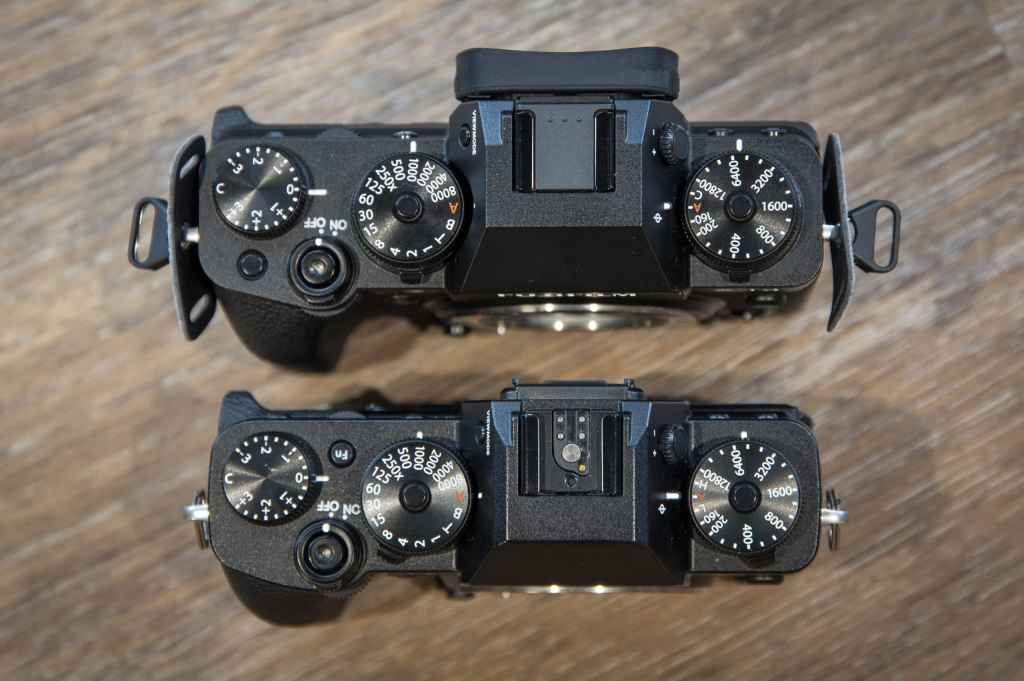
How to get Fujifilm camera pictures onto your phone?
With the help of an app! You can connect your Fujifilm X/GFX camera to your phone using the Fujifilm XApp or Fujifilm Camera Remote, which is available to download on both iOS and Android. All you need to do is turn on your camera to pair with your smartphone. Once you’ve done this, you can see your images and choose which to download to your phone.
How to connect your phone to a Fujifilm camera: Fujifilm Camera Remote app

Are Fujifilm cameras good for street photography?
Absolutely, yes. We’d go so far as to say that Fujifilm cameras are some of the best for street photography, for a number of reasons:
- Slimline design. Many Fujifilm cameras are designed with slim, pocketable bodies (and slim lenses to match). This is ideal for street photography, where you don’t want to be toting around a big, attention-grabbing camera/lens combo.
- Fast, silent shooting. Fujifilm cameras boast snappy burst rates and silent shutters, meaning you can grab several shots in succession without attracting too much attention.
- Great JPEG output. Fujifilm cameras are renowned for being some of the best cameras for JPEGs, thanks to their brilliant colour science and attractive film simulation modes. This is great for street photographers who want to give their shots a vintage look without having to spend too much time in editing.
- Terrific lens selection. If you opt for an X-mount mirrorless camera, you’ve got an absolutely brilliant selection of fast, sharp lenses at your disposal, many of which are ideally suited to street photography. Check out our guide to the best Fujifilm X-mount lenses for a detailed rundown.
How we test Fujifilm cameras
We test Fujifilm cameras by putting them through a wide range of real-world shooting scenarios, from street and travel photography to sports, landscapes, and video. We use each model over several weeks to get a real sense of its usability and performance in a variety of conditions you will encounter as a photographer.
Our assessment begins with handling, design, and controls, paying close attention to ergonomics, the viewfinder, and the rear screen. We also consider special features, such as the famous Fujifilm film simulation modes, and on some models, like the beginner-friendly X-T50, the dedicated film simulation dials.
Autofocus is tested alongside continuous shooting speed and buffer performance across a variety of subjects, from static scenes to fast-moving action. However, when a camera is designed for a specific purpose, such as the X-H2S, which is built for high-speed performance, we test it extensively on sports and wildlife subjects to see how well it handles fast-moving action.
Most Fujifilm cameras on this list feature In-body image stabilisation (IBIS). We evaluated its effectiveness in handheld stills as well as video, particularly how well it fares in low-light and at longer focal lengths.
Finally, we critically assess image quality in both JPEG and raw formats, focusing on resolution, high-ISO noise, and dynamic range. All of these factors — combined with considerations like value for money and lens ecosystem — are used to form our final verdict and score.
Recent updates
- 2025 Oct: Fujifilm X-E4 is taken off the list as it has become increasingly difficult to find on the second-hand market. The GFX100 II is also removed, as it offers an incremental upgrade over the GFX100S II which costs $2000 less.
Now you’ve found a great Fujifilm camera, have a look at more of our buying guides and latest reviews.

